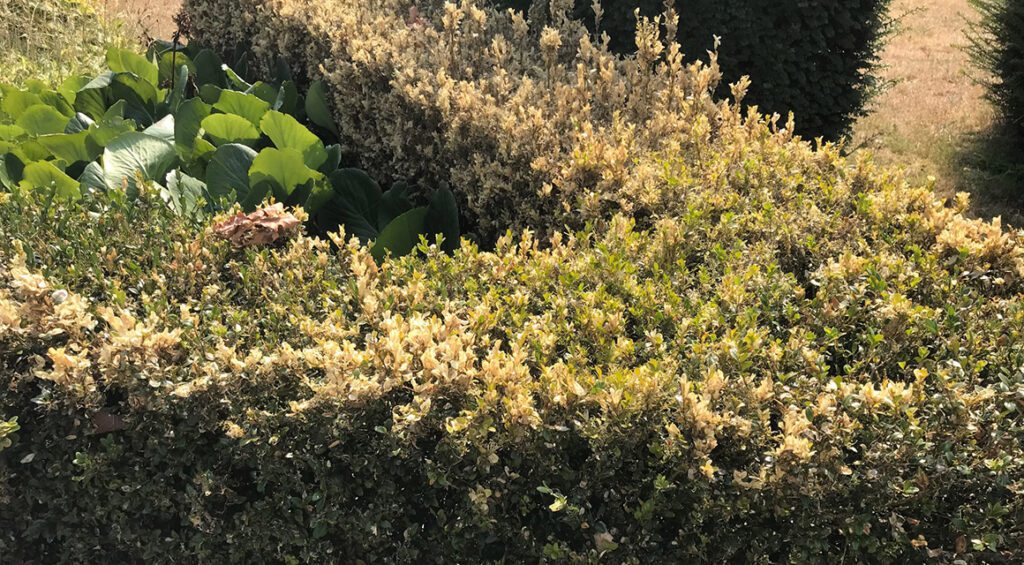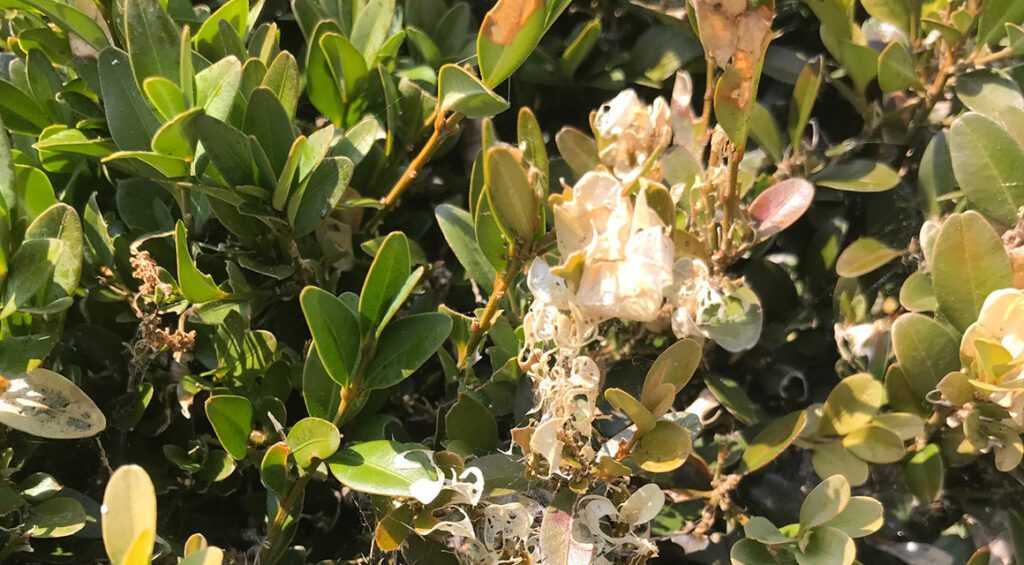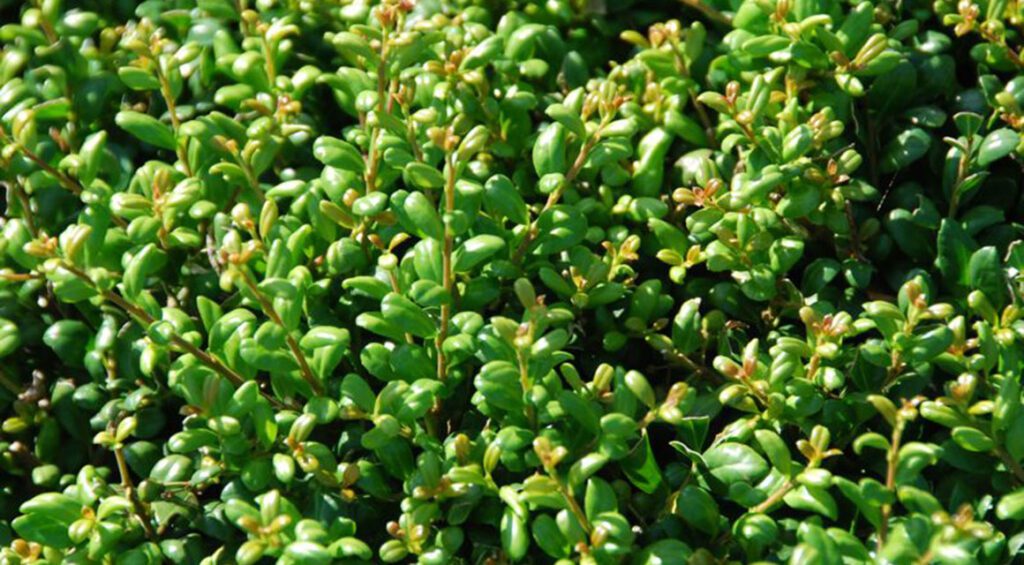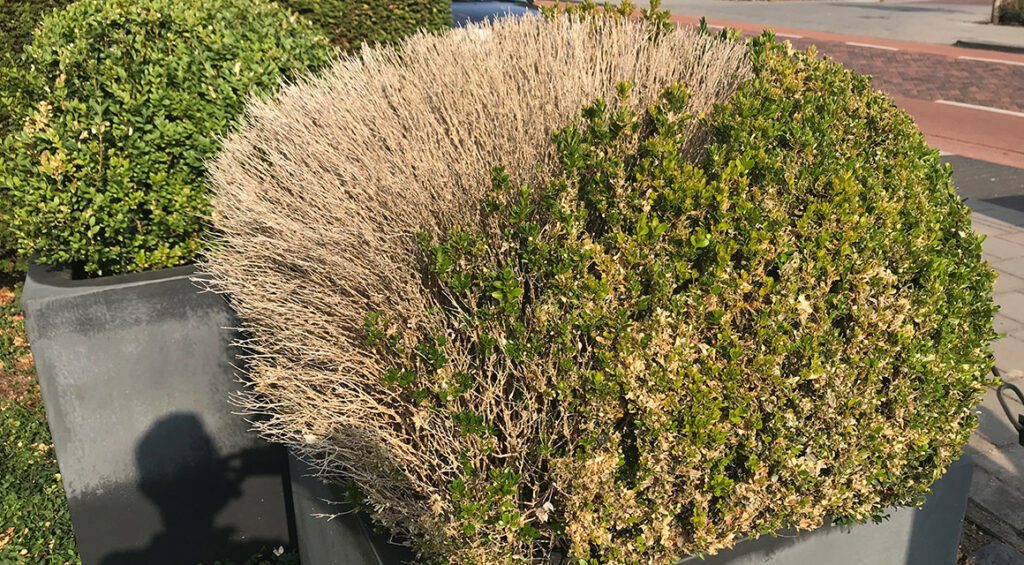Boxwood disease is a dangerous plant disease. If your boxwood hedge is attacked by it, then it can die already within a few days. There will then not be a leaf left in your neatly trimmed hedge. And then this probably goes completely against your expectations, if you have evergreen hedge plants in your garden, which should actually always look beautiful. The difficult thing is that boxwood diseases are difficult to control. Control is possible, but difficult to realize. Still, there are things you can do if your hedge gets boxwood diseases. But first, let’s take a look at exactly what boxwood disease involves.

Contents
What exactly are boxwood diseases now?
Although we are talking about boxwood diseases, in practice it is actually about two different mold diseases. It is mostly about the mold Cylindrocladium buxicola. When this fungus becomes active in your boxwood hedge, it will first cause spots on the boxwood leaves that are light brown to black in color. If you look a little deeper into the hedge, then you will also notice black streaks on the branches. Equally dangerous is the mold Volutella buxi, which dries out the leaves from the inside. Again, the color of the leaves is an important identifying feature: the leaves are then first brown in color, and then they fade.
The biggest problem with this is that these mold varieties have a preference for the Buxus sempervirens. However, boxwood is just the right hedge plant for forming elegant, tight hedges. In addition, these varieties of mold are also exceptionally persistent. Once you discover the mold, it’s usually already too late to fight it. It is therefore important to keep a close eye on your box hedge. You should then also take immediate action when you have discovered the mold in your hedge, because after just a few days, your boxwood hedge may already be completely destroyed or even dead.

Is it possible to fight the disease of boxwood?
If you recognize the boxwood mold at an early stage, then you can still do something about it. At this stage, then usually only a few branches are affected. These branches should then be cut off and thrown away. Because boxwood mold is aggressive, protective measures should be taken. Diseased branches should then not come into contact with healthy branches, because otherwise the mold will also attack healthy plant parts. So throw diseased plant parts immediately into the green garbage can or into a plastic bag. In addition, remnants of the mold can be on the cutting tools or even on your clothes. Therefore, you should clean them thoroughly after use.
There are also mold control agents that can kill mold diseases or even boxwood diseases. However, these are usually not available to private individuals. However, this does not make things any easier. Indeed, the treatment should be carried out regularly and it is important that the boxwood hedge is then also checked regularly to see if there are brown or pale spots in the hedge. With chemical fungicides, it can also happen that the mold eventually becomes immune to the components of the agent. This risk can be reduced by using different agents intermixed, but even then it is time consuming and expensive to control boxwood mildew. The boxwood borer can also be quite damaging to a boxwood hedge.

The solution: boxwood replacement
If your entire evergreen hedge is affected, then you should remove the plants from the garden ground and replace them with new hedge plants. If the conditions in your garden remain unchanged, then there is a possibility that the new boxwood hedge will then get boxwood diseases again. An easier and cheaper option in the long run is then to use boxwood replacements in the garden. Boxwood replacement consists of plants that are particularly similar to boxwood, but are spared from aggressive mold diseases. This is because the mold is not interested in how the plants look. By the way, the caterpillars of the boxwood borer do not care much about the appearance of the plants either.
The Japanese holly and the creeping spindle ‘Vegetus’, for example, are good alternatives for the boxwood. Especially the Japanese holly ‘Dark Green’® is hardly distinguishable from a boxwood. Both varieties have small, dark green leaves that have oval shapes and a shiny leaf top. So it’s no surprise that Japanese holly ‘Dark Green’® is particularly popular as a boxwood replacement. The result remains the same: a low, compact hedge that holds its shape well. However, Japanese hollies grow faster than boxwoods, which are decidedly slow-growing. But Japanese hollies or yews are also well suited for topiary.
However, other Japanese holly varieties can also be used well as boxwood substitutes, although Japanese holly ‘Kanehirae’ has a somewhat wilder form. However, if you don’t want to use the creeping holly ‘Vegetus’, then you can also use the creeping holly ‘Emerald ‘n Gold’ or even the creeping holly ‘Emerald ‘n Gaiety’, which are wonderful, rather colorful boxwood replacement options. However, hedge myrtle (in Latin, Lonicera nitida) is also often used as a boxwood replacement due to its leaves. However, this plant grows much faster than a boxwood, so the hedge myrtle should also be cut back much more regularly.


